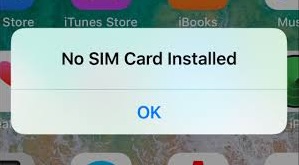Have you called back the number that just called you? Just to hear the message “The number you have dialed is not in Service”. Find out why the number just called you might be out of service and all the details with this in-depth article. Let’s jump right in!
You’re not alone if you think the number of incoming calls you receive has increased over the years. Many of these are spam calls.
In fact, approximately 40% of all calls were spam calls in 2019! They’re so common that some people never answer phone calls.
Scam calls have pretty much become a running joke that it’s hard to believe 270% more people fell victim to these calls in 2020 than in 2019.
Still, you might not realize how many of your incoming calls are spam, especially if you miss them and the caller doesn’t leave a message.
Calling back may help you find out the question about where all those nuisance calls are coming from.
For instance, you might be directed to the carrier or main office if the call came from a business.

Of course, this only works if the caller ID shows a phone number. If it comes up as an unknown caller, you can’t tell who called you.
Even if the caller ID information shows a phone number, it may not help you find out who the caller is.
How Can It Be, The Number You Have Dialed Is Not In Service?
It might initially be confusing if you’ve received a phone call from a number that’s not in service.
Perhaps you missed or screened the call or received a voice mail message and tried to call the number back immediately.
However, you received an error that the number isn’t in service. How can this be?
The answer is that phone calls aren’t actually coming from the number you see on your cell phone screen. Instead, scammers use computer programs called caller ID spoofers to make a different phone number appear when you receive a call.
If your phone company doesn’t check and verify the number, you’ll see the fake number on your phone.
How Do Scammers Choose Numbers to Spoof?
Scammers spoof pretty much any phone number using computer software. However, they often choose numbers based on a few factors.
The number is legitimate and belongs to a trusted source.
The number shares your area code.
The number is similar to your landline or cell phone number (neighbor spoofing). This makes up 70% of spoofed calls.
All of these tactics serve the same purpose: making you more likely to answer the phone. Once you pick up the phone, you’re greeted by the caller.
Perhaps the caller pretends to be with the IRS and wants you to verify your identity with your Social Security number.
They’ll then use that number to attempt identity theft, something that impacts 1.3 million children annually. Many scams exist, including straight-up investment fraud.

Sometimes these are automated calls that play recordings, saving the scammer effort.
You may recognize recordings from previous calls. But even if you recognize the scam for what it is, you can’t determine who is behind it when scammers spoof their number.
When scammers randomly spoof phone numbers, it might not be in service. However, scammers benefit if the number is in service or not.
Either way, it means potential victims can’t trace the call back to its source.
If you’ve ever returned a phone call, only to have the person on the other line adamantly deny having just called you, you’re already familiar with how effective this tactic is.
Similarly, you might have answered your phone only to hear a confused or angry caller demanding to know why you called them.
You might have laughed it off, or it may have worried you.
In fact, scammers often target potential victims at random by using computer software to generate outgoing phone numbers. You might hear people refer to these types of calls as “robocalls.”
They make up around 1/3 of all phone spam in the U.S. The truth is, scammers don’t care about you. They just want to target anyone who might pick up.
Why Call Spoofing Is A Scammer’s Method of Choice
Phone number spoofing is also an effective way for scammers to avoid being blocked.
You can block specific phone numbers from your recent calls list on both Android and Apple devices.
You may also be able to ask your phone company to block calls from some numbers. But scammers can simply generate another one in an attempt to successfully scam you.
Protect Yourself From Spoofed Calls and Scammers
To avoid becoming a victim of a scam, you shouldn’t answer calls from unknown numbers. If you do happen to pick up when a scammer is on the other end, don’t give them any information.
Simply hang up. You can always call the official number of any person or organization that the scammers are imitating.
Cell phone subscribers may also have options to reduce spoofed phone calls in general.
The first step is to contact your cell phone provider, offering apps or caller ID services that verify phone numbers. They may also be able to block robocalls on your account, making it harder for spam callers to get through.
Furthermore, you can also add your phone number to the National Do Not Call Registry, where you can also report robocalls.
But, unfortunately, scammers who may already be breaking the law don’t abide by these rules.
The next step to consider is a third-party phone app designed to block robocalls. Several options currently exist.
Nomorobo is available for Android and Apple (iOS) and compares incoming calls to a database of more than 800,000 phone numbers. The app is designed to let legitimate phone calls, such as those from your doctor’s office, through while blocking unwanted calls.
RoboKiller has an even larger database of scam phone numbers. This app also has a unique feature where you can play a recording back to the scammer to give them a taste of the frustration you’ve experienced!
However, you may not need a third-party app if your phone already has a helpful app installed.
For example, Android lets you turn on call filtering. In addition, both Android and Apple allow you to block calls from specific numbers.
Use Do Not Disturb Mode to Mute Annoying Spam Calls
You’ll still likely receive spam calls, including some from phone numbers that appear to be out of service. To minimize distraction or disruption, enable your phone’s Do Not Disturb mode, which turns off audible alerts for calls and messages.
You’ll still receive calls and perhaps annoying voicemails but they won’t interrupt your day.

You can use this feature to do several useful things.
Disable alerts for unknown callers (who aren’t in your address book).
Instruct your phone only to play a sound only when certain people in your contact list call or text you.
Schedule Do Not Disturb to turn on automatically during certain hours when you might be sleeping or working. The best part for Android users? Your phone lets you schedule DND mode during specific events. You can even vary the hours between days or the week and weekend. Apple users can turn on DND mode while driving with a single swipe.
Let your phone ring if the caller places multiple calls within a short timeframe. This is useful when the caller is trying to contact you during an emergency.
Unfortunately, spoofing makes it harder for scam artists to get caught, and they know this!
So that’s exactly why you might receive more nuisance calls and calls from unknown callers. Scammers want to use as many spoofed numbers as possible because technology catches up with them.
You may still get incoming calls from a phone scammer if you use the tools on this list. It isn’t easy to keep up with all the phone numbers they use when spoofing.
Beware Text Scams
Texting has also increasingly become a way people try to scam unsuspecting victims.
Scammers will often imitate legitimate organizations such as your cell phone provider to get you to click a link.
However, the link you click might download infected files to your phone or have you enter sensitive information.
Fortunately, both Android and Apple include options to filter messages from unknown senders. You can also block messages from specific senders and report them as spam.
However, this faces the same problems as phone scams: scammers may not use the same number.
In fact, if you receive multiple unwanted calls from the same number, the caller is more likely to be a legitimate telemarketer than a scammer.
However, even telemarketers can use illegal practices such as spoofing. In one case, the FCC fined a telemarketer a record $225 million in March 2021 for making 1 billion robocalls in just five months! The company often used spoofing for those calls.
Spoofing is big business. Knowing this, it shouldn’t shock you phone scams are one of the type five frauds reported to the FTC. While you can’t block every scam call or text, you can make them more manageable.
In the meantime, knowing that phone calls can come from out-of-service numbers because of spoofing lets you save energy on returning all those calls.
Sum It Up
In a world where the ubiquity of phone technology has intersected with the cunning strategies of scammers, the enigma surrounding a number dialed being “not in service,” despite just receiving a call from it, underscores a sophisticated manipulation of caller ID systems. This bewildering scenario, raising the same question among countless recipients, serves as a clarion call highlighting the pervasive issue of caller ID spoofing.
When individuals attempt to reach back, contacting the seemingly disconnected number, they’re met with a stark notification of the number being out of service. This tactic, a favored ruse by scammers, leverages spoofed digits that mimic legitimate area codes and numbers, making the calls appear as though they’re coming from a familiar, if not identical, phone number or area code, thereby significantly increasing the likelihood of the call being answered.
This subversion of the traditional phone calling system, where blocked numbers could once be easily circumvented through the recipient’s phone settings or their carrier’s assistance, now faces a labyrinthine challenge due to these spoofed calls.
As individuals grapple with this issue, the data and details behind each call become pivotal in distinguishing between genuine and malicious calls. Additionally, this phenomenon has spurred the development and recommendation of applications and technological solutions aimed at identifying and blocking such deceptive calls, enhancing the ability for users to safeguard their phone lines from unwarranted disruption.
Despite the efforts to setup barriers against these nefarious activities, scammers continue to find new means to penetrate these defenses, making it increasingly difficult for the average person to differentiate between a legitimate call and a potential scam.
This ongoing battle between scammer ingenuity and technological advancements to block and report such calls highlights a significant tension in the digital age, where the very technology that offers convenience and connectivity can also serve as a conduit for deception and fraud.
In light of these challenges, the article sheds light on the imperative for individuals to remain vigilant, to question the legitimacy of unexpected calls, and to employ the available resources—whether through their phone’s built-in capabilities, carrier services, or third-party applications—to safeguard their personal information and maintain the sanctity of their digital communications.
Through a collective effort to understand and utilize these defensive mechanisms, society can hope to stem the tide of caller ID spoofing and reclaim a sense of security and trust in the increasingly complex landscape of telecommunications.
If you are getting this message while using WhatsApp then check out this article here.






